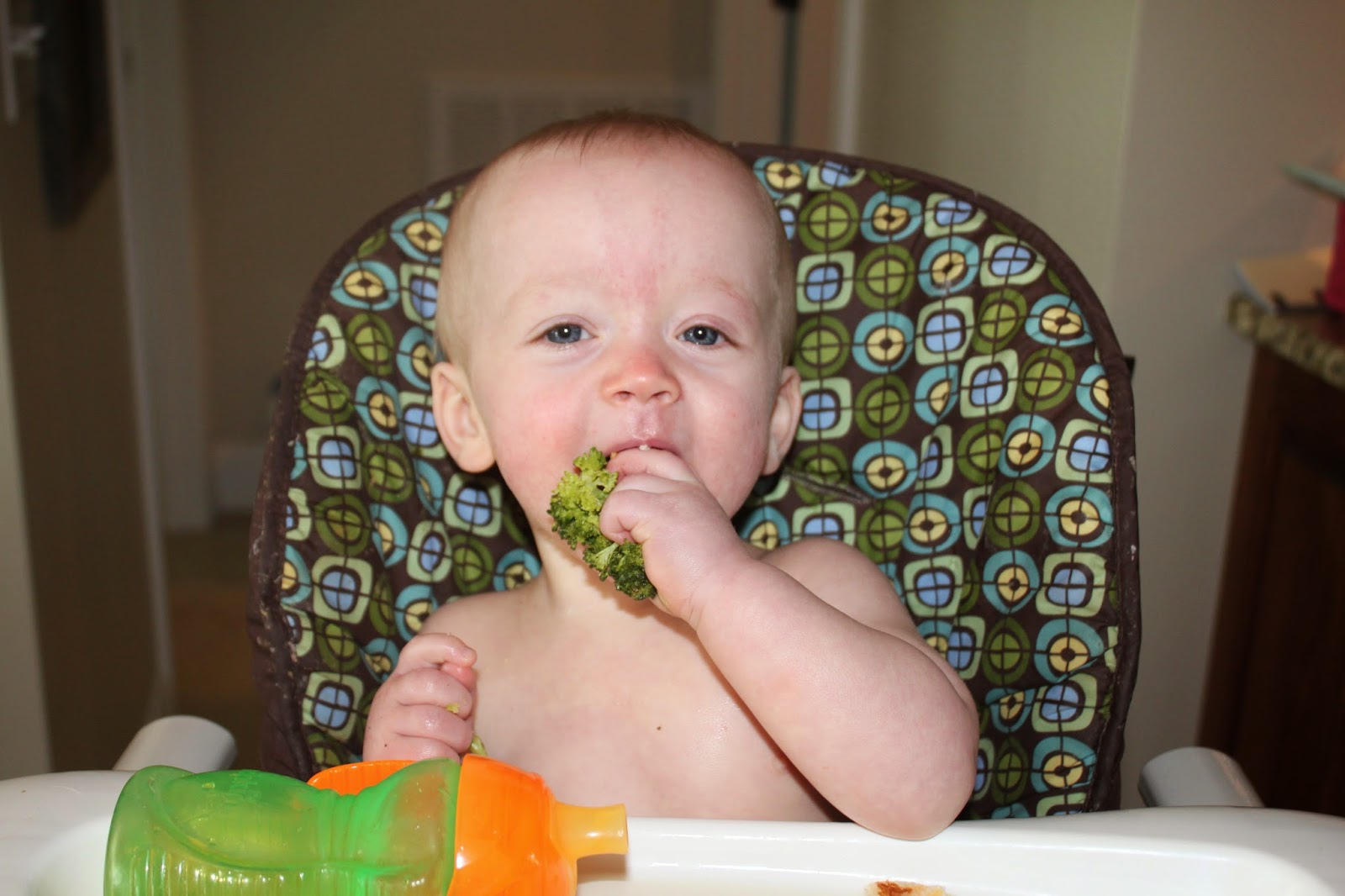Baby-led weaning (often also referred to as BLW) is a method of adding complementary foods to a baby's diet of breastmilk or formula. A method of food progression, BLW facilitates the development of age appropriate oral motor control while maintain eating as a positive, interactive experience. Baby-led weaning allows babies to control their solid food consumption by "self-feeding" from the very beginning of their experiences with food. The term weaning should not be taken to imply giving up formula or breastmilk, but simply the introduction of foods other than formula or breastmilk.
We are not completely following everything they suggest. We started out with purees first. We started offering solid foods around 8 or 9 months. Here they are feeding themselves spaghetti.
My informations is complements of Wikipedia. They explain what baby led weaning is and why it is good for their development.
Baby-led weaning (term attributed to Gill Rapley) places the emphasis on exploring taste, texture, color and smell as the baby sets their own pace for the meal, choosing which foods to concentrate on. Instead of the traditional method of spooning puréed food into the baby's mouth, the baby is presented with a plate of varied finger food from which to choose.
Contrary to popular belief, there is no research supporting the introduction of solids by purees, and proponents of baby-led weaning argue that babies can become very confused when lumpy foods are introduced at stage 2 of traditional weaning, unsure whether to swallow or chew.[3]
According to one theory, the baby will choose foods with the nutrients she might be slightly lacking, guided by taste.[4][5] The baby learns most effectively by watching and imitating others, and allowing her to eat the same food at the same time as the rest of the family contributes to a positive weaning experience. At six months of age babies learn to chew and grasp and this is therefore the ideal time to begin introducing finger food.
Self-feeding supports the child’s motor development on many vital areas, such as their hand-eye coordination and chewing. It encourages the child towards independence and often provides a stress-free alternative for meal times, for both the child and the parents. Some babies refuse to eat solids when offered with a spoon, but happily help themselves to finger food.
As recommended by the World Health Organization and several other health authorities across the world, there is no need to introduce solid food to a baby’s diet until after 6 months, and by then the child’s digestive system and their fine motor skills have developed enough to allow them to self-feed. Baby-led weaning takes advantage of the natural development stages of the child.
Whole pieces of banana.
Feeding themselves yogurt. I would fill their spoon up for them and then let them feed themselves. The only issue is that they get so messy when they feed themselves but developmentally they will learn to feed themselves faster.
More spaghetti.
Avocados!!!!
Yummy Broccoli!
They are getting better at drinking from the sippy cups!































No comments:
Post a Comment